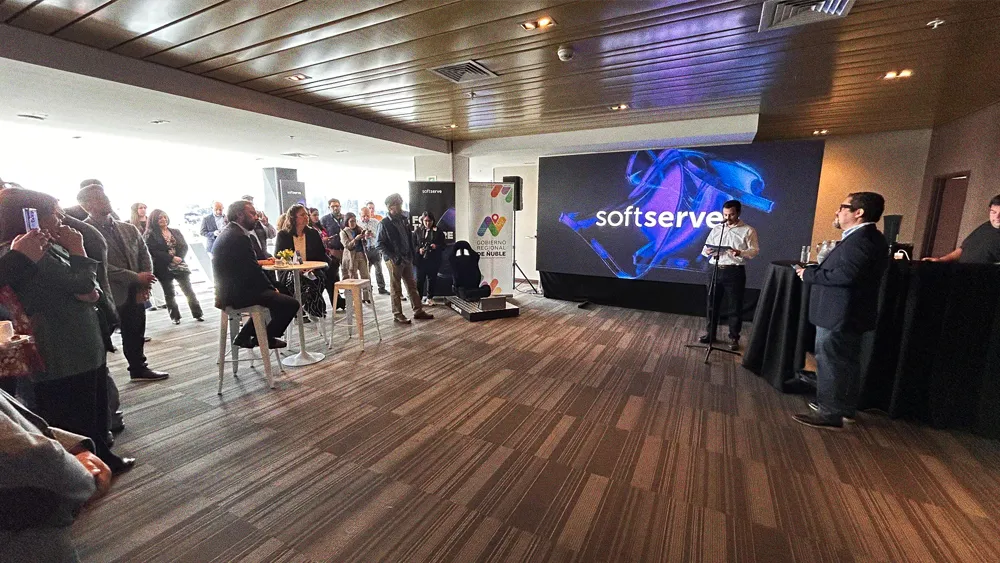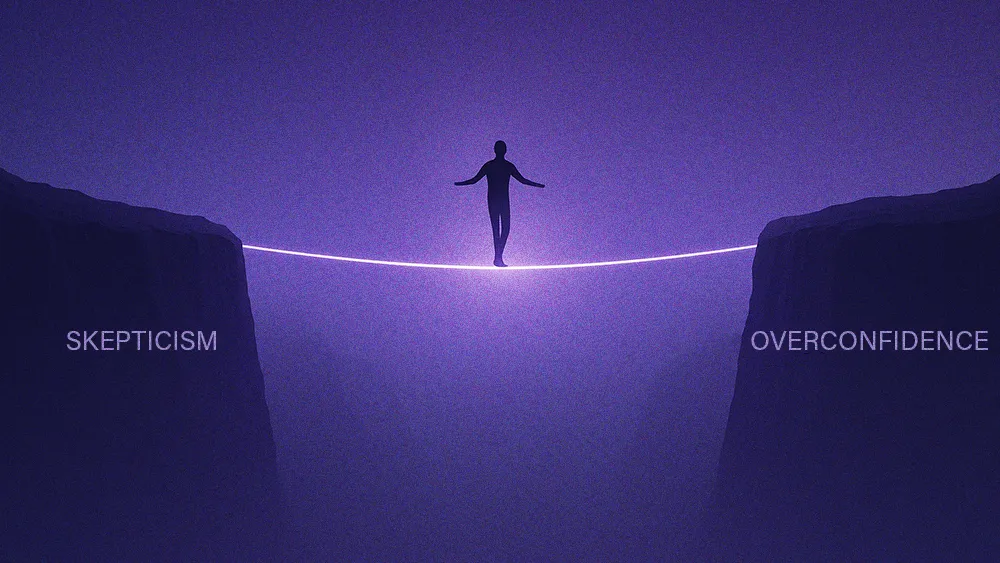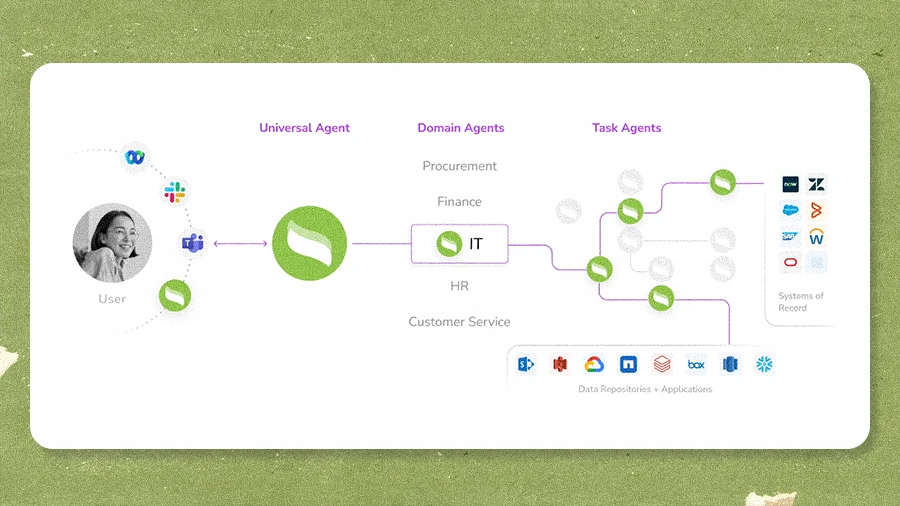SVP, HR Transformation at SoftServe Champions AI Augmentation to Power New Class of Super Workers

Key Points
As the hype around AI fades, leaders are shifting from a focus on replacement to a human-centric approach that augments their workforce.
Kateryna Hubaryeva, SVP of HR Transformation at SoftServe, explains that this strategy combines AI’s efficiency with human ingenuity to create a more strategic and effective workplace.
By standardizing workflows, requiring human verification of AI output, and fostering a culture of continuous learning, leaders can build employee confidence while ensuring human judgment remains central to the most critical decisions.
The real opportunity lies in combining AI-driven efficiency with human ingenuity. As a result, skills like deeper thinking, creativity, and collaboration are on the rise.

Kateryna Hubaryeva
SVP of HR, Global Operations and Transformation
SoftServe
The initial shock-and-awe of generative AI has faded. Now, the hard work begins. As the technology moves from a novel trend to a core business function, leaders are shifting their focus from futuristic predictions to the pragmatic challenges of integration. How do we redesign jobs? How do we govern a tool that makes mistakes? And how do we bring our people along for the ride?
This is the new reality of AI at work. Kateryna Hubaryeva, SVP of HR, Global Operations and Transformation at IT services provider SoftServe, knows it well. A Harvard Business School alum and a Forbes UA Top 25 Woman in IT, she has two decades of experience spearheading award-winning, data-driven HR projects and leading through rapid change, including emergency HR efforts during the war in Ukraine.
According to Hubaryeva, the AI debate is settled. “AI isn’t hype anymore. We’re moving closer to the plateau on Gartner’s hype cycle. It has become a core business capability,” she says. The true opportunity lies in a deliberate, human-centric process of augmentation. “The real opportunity lies in combining AI-driven efficiency with human ingenuity. As a result, skills like deeper thinking, creativity, and collaboration are on the rise,” she adds.
Trust but verify: A human-centric approach starts with admitting a simple truth: AI makes mistakes. As companies integrate AI, they are confronting its potential for error. In response, new workflows and governance frameworks require human verification. “While we initially instructed teams to use AI for faster research, we’ve adjusted that mandate after seeing multiple AI hallucinations. Now, the instruction is to use AI, but then verify the output to check for errors,” Hubaryeva explains.
Check your code-pilot: “The same is true for engineers. You need to validate the AI-generated code by running it several times to check that it works correctly, isn’t hallucinating, and doesn’t break other parts of the system,” she continues. This integration turns engineers into super workers capable of faster, higher-quality output, provided the process is properly regulated and governed.
The result is a redefinition of the job itself, leaving leaders to decide what work is for algorithms and what requires a human touch. The outcome is the creation of what Hubaryeva calls AI-augmented positions focused on strategic responsibilities. A major organizational redesign must be a collaborative process, co-created with the leaders and employees who deeply understand the work to be done. “AI can provide the insights, but it’s still you who knows your client. That part of the role must stay with the human, because you are building a relationship, not AI,” she states.
A culture of continuous learning is the foundation for any transformation. To counter the AI skills gap and ease employee anxiety, learning becomes a strategic imperative. At SoftServe, every employee must complete an AI 101 course with ongoing support from internal knowledge-sharing communities. Investing in AI literacy and support can build the confidence needed for widespread adoption. “When people feel confident, they are more adaptive and their adoption rate increases. They understand we are teaching them to use AI not to replace them, but to amplify them. Technology should amplify, not replace, human potential,” she stresses.
Order in the court: But there’s a catch. You can’t plug AI into a chaotic workflow and expect results. She says that trying to implement AI without first establishing standardized workflows prevents it from delivering value and can lead to ungoverned shadow AI. True augmentation means reimagining the work itself within a framework of clear standards where AI can operate reliably. “You cannot implement AI in a chaotic environment. To succeed, you need clear standards and human-centered governance that addresses challenges like bias and overreliance,” she advises.
For all the talk of automation, the story begins and ends with humans in the loop. Even as AI assistants become common, Hubaryeva insists that key functions remain the work of human leaders. AI can provide a fair assessment of data, but it cannot deliver nuanced, empathetic feedback or make the final, high-stakes judgment call. “The final decision is still with humans. Only a live human being can tell you if you have a blind spot and deliver that feedback with Radical Candor, which is when you provide honest feedback, but with love.”
Related articles
TL;DR
As the hype around AI fades, leaders are shifting from a focus on replacement to a human-centric approach that augments their workforce.
Kateryna Hubaryeva, SVP of HR Transformation at SoftServe, explains that this strategy combines AI’s efficiency with human ingenuity to create a more strategic and effective workplace.
By standardizing workflows, requiring human verification of AI output, and fostering a culture of continuous learning, leaders can build employee confidence while ensuring human judgment remains central to the most critical decisions.

Kateryna Hubaryeva
SoftServe
SVP of HR, Global Operations and Transformation

SVP of HR, Global Operations and Transformation
The initial shock-and-awe of generative AI has faded. Now, the hard work begins. As the technology moves from a novel trend to a core business function, leaders are shifting their focus from futuristic predictions to the pragmatic challenges of integration. How do we redesign jobs? How do we govern a tool that makes mistakes? And how do we bring our people along for the ride?
This is the new reality of AI at work. Kateryna Hubaryeva, SVP of HR, Global Operations and Transformation at IT services provider SoftServe, knows it well. A Harvard Business School alum and a Forbes UA Top 25 Woman in IT, she has two decades of experience spearheading award-winning, data-driven HR projects and leading through rapid change, including emergency HR efforts during the war in Ukraine.
According to Hubaryeva, the AI debate is settled. “AI isn’t hype anymore. We’re moving closer to the plateau on Gartner’s hype cycle. It has become a core business capability,” she says. The true opportunity lies in a deliberate, human-centric process of augmentation. “The real opportunity lies in combining AI-driven efficiency with human ingenuity. As a result, skills like deeper thinking, creativity, and collaboration are on the rise,” she adds.
Trust but verify: A human-centric approach starts with admitting a simple truth: AI makes mistakes. As companies integrate AI, they are confronting its potential for error. In response, new workflows and governance frameworks require human verification. “While we initially instructed teams to use AI for faster research, we’ve adjusted that mandate after seeing multiple AI hallucinations. Now, the instruction is to use AI, but then verify the output to check for errors,” Hubaryeva explains.
Check your code-pilot: “The same is true for engineers. You need to validate the AI-generated code by running it several times to check that it works correctly, isn’t hallucinating, and doesn’t break other parts of the system,” she continues. This integration turns engineers into super workers capable of faster, higher-quality output, provided the process is properly regulated and governed.
The result is a redefinition of the job itself, leaving leaders to decide what work is for algorithms and what requires a human touch. The outcome is the creation of what Hubaryeva calls AI-augmented positions focused on strategic responsibilities. A major organizational redesign must be a collaborative process, co-created with the leaders and employees who deeply understand the work to be done. “AI can provide the insights, but it’s still you who knows your client. That part of the role must stay with the human, because you are building a relationship, not AI,” she states.
A culture of continuous learning is the foundation for any transformation. To counter the AI skills gap and ease employee anxiety, learning becomes a strategic imperative. At SoftServe, every employee must complete an AI 101 course with ongoing support from internal knowledge-sharing communities. Investing in AI literacy and support can build the confidence needed for widespread adoption. “When people feel confident, they are more adaptive and their adoption rate increases. They understand we are teaching them to use AI not to replace them, but to amplify them. Technology should amplify, not replace, human potential,” she stresses.
Order in the court: But there’s a catch. You can’t plug AI into a chaotic workflow and expect results. She says that trying to implement AI without first establishing standardized workflows prevents it from delivering value and can lead to ungoverned shadow AI. True augmentation means reimagining the work itself within a framework of clear standards where AI can operate reliably. “You cannot implement AI in a chaotic environment. To succeed, you need clear standards and human-centered governance that addresses challenges like bias and overreliance,” she advises.
For all the talk of automation, the story begins and ends with humans in the loop. Even as AI assistants become common, Hubaryeva insists that key functions remain the work of human leaders. AI can provide a fair assessment of data, but it cannot deliver nuanced, empathetic feedback or make the final, high-stakes judgment call. “The final decision is still with humans. Only a live human being can tell you if you have a blind spot and deliver that feedback with Radical Candor, which is when you provide honest feedback, but with love.”




